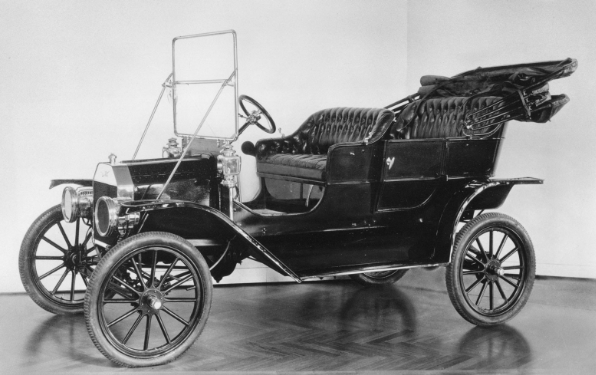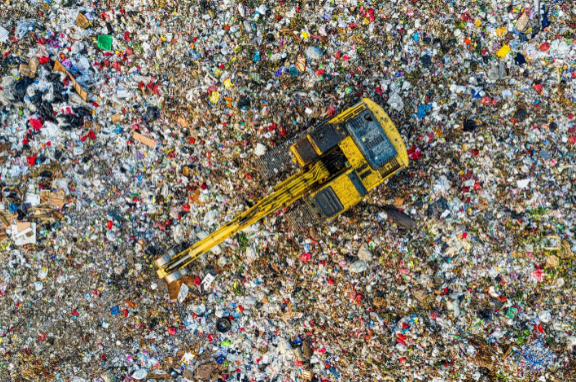Updated: 7 Jun 2022
Back in 2016, Tesla Inc. hit a new record for the highest single-day commitment of cars, with reservations made for over 180,000 units of their Model 3. 276,000 units were pre-sold in the first day, which was the equivalent of $11.5 billion.
But cars aren’t the only commodity we race out to buy as soon as the latest model is out. Other tech products, like phones and tablets, new games or books, as well as the latest clothing lines in the fashion industry can also weaken our resolve.
Is this down to impeccable marketing efforts from the businesses behind these product launches? To some degree, yes. However, there’s something a lot more fundamental going on in our brains that makes us so desperately want the latest gadgets as soon as they’re released.
Biologically speaking, our brains are genetically wired to satisfy basics survival needs – including security and social status. Realising these desires triggers activity in the reward network of the brain, which releases a chemical known as dopamine.
Over time our basic needs, like accessing food and water, have become easier to achieve, leading to a shift in what we now class as requirements for modern life, such as keeping up to date with trends and new ways of socialising digitally.
All in all, this positive feeling we get when we get our hands on the latest tech (i.e., that big dopamine rush) reinforces our compulsive behaviours – including how we shop.
With this in mind, it’s hardly surprising that a neuroimaging study revealed that Apple products activate the same parts of the brain in its fans as religious images trigger in a person of faith.
So, what can brands do to artificially trigger this biological response that makes us want to get our hands on the latest trend? One practice that’s been in existence from as early as the marketing of the first lightbulbs is something called ‘planned obsolescence'.
What is Planned Obsolescence?
Planned obsolescence is the practice of deliberately creating consumer goods that rapidly become obsolete (or out of date) and therefore need to be frequently replaced. Essentially, it’s a marketing and manufacturing trick to keep you buying.
When you hear your grandparents utter the old idiom “They don’t make ‘em like they used to”, this is probably what they mean.
Products are designed in a way in which their life cycles are artificially limited or are purposely frail and prone to breaking. Due to these short lifespans, the consumer must then shell out to purchase a newer model or replacement for their now obsolete goods. Great for ensuring profit for companies whose products would otherwise last a lifetime, potentially not so great for consumers, or the environment.
The three most common strategies for planned obsolescence are:
- Unreliable parts – making sure a product fails within a relatively predictable period of time so the consumer must pay to replace the exact product or a slightly newer one.
- Software – using software to program a product to fail after a set period of time or number of actions, or perform a software upgrade that is incompatible with older hardware.
- Marketing – clever marketing tactics can convince consumers to make an insignificant upgrade and discard their older, ‘uncool’ model. This technique is often used for marketing new models of smartphones.
But is planned obsolescence always bad? And where did it start?
Crafting a Product that Lasts

One of the earliest known instances of planned obsolescence dates back to 1920s lightbulb manufacturing.
In a Californian fire station, a dim light bulb glows in a glass case. Blink, and you’ll miss it. But, this lightbulb has been in almost non-stop operation for over 117 years, passing one million hours of near-continuous operation. It even has a webcam to stream live video of the bulb to thousands of viewers every day!
When you compare this with a typical modern-day incandescent lightbulb, you’re looking realistically at a maximum of 2,000 hours, or about 83 days. An LED lightbulb life lasts significantly longer – around 50,000 hours, or 5.7 years of continuous operation.
Behind the longevity of this centennial lightbulb is old-fashioned American craftsmanship, and although it’s no longer bright enough to act as anything other than a night light, it’s interesting to consider that the lightbulbs we all use in our homes can’t compete with its lifespan.
Shining a Light on Planned Obsolescence
Although the story behind the centennial bulb in California has wholesome beginnings, there is a shadier history to commercially available lightbulbs.
In 1924, major lightbulb manufacturers from around the world including Germany’s Osram, USA’s General Electric and Netherlands’ Philips gathered in Geneva, Switzerland and formed the Phoebus Cartel – a group created to control the manufacturing and selling of incandescent lightbulbs.
As well as carving up national and regional zones for each manufacturer to sell in, the supervisory body also set a limit of 1,000 hours for a pear-shaped household bulb’s lifespan – a drastic cut from the 1,500-2,000 hours that were common at the time.
The cartel rationalised this approach as a trade-off: sure, your lightbulb won’t last as long, but they’re a higher quality, more efficient and burn brighter than other bulbs. But they’ll also cost a lot more.
The evidence points to the cartel being driven by profits and sales, rather than what was best for the consumer, and is probably the most notable example of the industrial strategy that is now known as planned obsolescence.
Although the practice may have been used before, it was never to this scale (and in this case, the leaked documents were found decades later detailing the group’s plans!)
Reversing years of progress to limit lightbulbs to just 1,000 hours was serious work. Each factory bound by the cartel’s agreement – of which there were hundreds across the globe – had to regularly send samples to a central testing laboratory in Switzerland. There, the bulbs were vetted against the cartel’s standards, and any factory found to be producing bulbs that lasted a longer or shorter time than that regulated were obliged to pay a fine.
The Fall of the Cartel
By the late 1930s, the Phoebus Cartel was hit by production issues caused by the start of World War II, but also by external competition.
As the cartel continued to artificially elevate prices, smaller electrical companies saw a golden opportunity to sell cheaper, longer-lasting products, and consumers were choosing to shop with these smaller manufacturers.
Nowadays, we’re moving away from incandescent lightbulbs and towards LED bulbs, the long lifespans of which mean, in normal usage, these lamps will last so long that the owners will probably sell the house they’re in before having to replace them.
The competition in today’s lighting industry is bigger than it was in the early 1900s, and government monitoring of collusive behaviour more vigilant, meaning the likelihood of a modern-day Phoebus Cartel is pretty slim.
However, it’s easy to see the temptation for businesses to practice such a profit-driven version of planned obsolescence, and the cartel was almost the perfect example of how it might have succeeded.
Creating New Colours for Cars

While the Phoebus Cartel was taking control of the global lighting industry, a very different battle was taking place in the auto market between Ford and General Motors.
Another origin story for planned obsolescence, General Motors leapt on an opportunity they thought competitor Ford was missing out on.
Sure, the Ford Model T was good enough (if you asked Henry Ford, that is) – popular, dependable and rather dashing in the only colour that was available at the time: black.
Why fix what isn’t broken?
But there was one flaw in this plan commercially: when there’s only one option for a car, there’s no need to trade-in for a new one.
General Motors CEO Alfred P. Sloan noticed this flaw and took this as an opportunity to drive consumer demand. GM would release new models of cars, in new colours, with faster engines every year – thereby, creating their own demand.
He wrote in his 1963 autobiography:
“The change in the new model should be so novel and attractive as to create demand… and a certain amount of dissatisfaction with past models as compared with the new one.”
This idea of thought was pretty controversial, particularly as his strategy came about during the Great Depression and consumers were struggling to put food on the table, never mind buy a new car.
But people did start buying new cars more frequently, with the middle classes defining themselves by not only being able to afford the newest releases but the upgraded versions that were released more regularly too.
The Planned Obsolescence of Tech

In 2017, Apple made frontline news by openly admitted to ‘performance throttling’ – or slowing down older models of iPhones to encourage consumers to purchase newer versions through software updates. Although they haven’t admitted that this is a form of planned obsolescence, Apple has been sued for this practice multiple times, most recently in 2021 in Portugal.
Smartphones in general are often discarded after a couple of years’ use. Screens crack, batteries die, buttons stop working, you can no longer update apps or upgrade software – these are all issues we’ve faced at some point or another.
But there’s always a better option waiting for you when your phone does pack in, with new models released every year.
From a more nuanced point of view, it’s also likely that technology obsoletes itself – by the time your smartphone does break, technology will have moved on and the newest version will outperform your current model.
Many tech owners, therefore, might actually appreciate paying less for their goods knowing full well the battery won’t last longer than three years, because they know they’ll want to upgrade around then anyway.
The Environmental Impact of Obsolescence

Planned or not, rapidly discarding and buying the latest gadget, car, dress or other consumer must-have ultimately impacts the environment.
E-waste (wasted electronics and electricals) is regarded by the UN as the world’s fastest-growing domestic and commercial waste stream, with this type of waste generation massively outstripping the effects of recovery systems, repair and recycling.
In the UK alone, we produced 23.9kg of e-waste per capita in 2019 (Global E-Waste Monitor Report), making us the second biggest e-waste capita in the world.
Planned obsolescence contributes to this waste by encouraging a ‘buy new and buy often’ culture.
The negative impact of e-waste, in particular, has significant implications for the environment as many of these products require highly specific materials and metals that are normally acquired through mining.
How Do We Address This Issue?
1. Personally
In our personal lives, we can make a difference by opting for craftmanship over tack – buying something that’s built to last, even if it means paying a little bit more at the time as it will be worth it in the long run.
Repairing goods or using a repair service instead of discarding and buying new is also a great option which can help you save money and reduce the impact on the environment.
There is evidence that we are taking more accountability for our waste, and electronics in particular.
In 2019, Ting Mobile surveyed 3,500 smartphone users and found that, instead of rushing to get the latest releases, most people (47%) were keeping their phones for 3-5 years, with 8% waiting even longer than that to replace their tech.
Only 18% of those surveyed claimed they upgraded their phone because their phone was outdated and even fewer (10%) said it was because they wanted the hot new model.
The majority of respondents upgraded their smartphone because it wasn’t working properly (32%) or it was broken (23%).
2. As a Business
Taking control of the waste created by your business is key to deterring the negative environmental impacts of obsolescence.
Here at instantprint, we work with multiple waste management partners to ensure 97% of our waste output is recycled, and we’re constantly working towards improving that number. We also make sure we’re using the greenest possible materials available to us – FSC mix and recycled stocks – which are sustainable papers and fully recyclable for our customers after they’ve finished using their print. You can read all of our sustainability promises here.
Technological innovation can also reduce the environmental impact of the waste due to older tech becoming obsolete by helping industries to create more eco-friendly electronic products. Researchers at Stanford are currently exploring eco-friendly alternatives to electronic materials and instead developing organic, bio-degradable electronics for example.
3. Globally
On a larger scale, some governments are creating legal penalties to deter planned obsolescence. France is leading the way for taking legal action against companies using planned obsolescence with The Energy Transition Act of 2015, which introduced fines of up to EURO 300,000 and prison sentences of up to 2 years for company directors.
Under the Sale of Consumer Goods and Associated Guarantees Directive, EU consumers are also entitled to repair or replacement of goods that are not fit for purpose or do not match the description given by the seller – however, this only applies within a two-year guarantee period.
Another approach is to expand the recycling of electronics. In New York, the Electronic Equipment Recycling and Reuse Act requires manufacturers to provide free and convenient recycling options of electronic waste to those living in the state. The New York State Department of Environment
Conservation and The Environmental Law Institute also run seminars to educate manufacturers on their obligations under these laws.
Can Planned Obsolescence Ever Be a Good Thing?
While this practice can be seen as exploitative, the planned obsolescence model actually does have a few benefits.
Most obviously, it enables manufacturers in competitive markets to stay profitable by releasing small changes often. If customers bought a product and didn’t need to buy another for 5 or 10 years, the company would struggle to stay afloat.
In turn, it also allows companies to sell their products at a more affordable price and still stay profitable, which benefits both the company and the consumer. Inexpensive parts, replaceable products and a more refined manufacturing process have given people of all incomes access to more goods, which may not have been possible in the past. And because many of us have access to all of these products, we have much more convenient lifestyles.
Creating new upgrades and keeping up with high consumer demand requires a lot of work. That constant level of work betters the economy as workers are needed to fulfil the demand for the latest product. This creates more jobs and gives manufacturing workers the chance to make a living and contribute to society.
Planned Obsolescence or the Forward March of Technology?

One of the biggest examples of planned obsolescence is the smartphone. With new technology such as 4G being developed, this renders older 3G phones that don’t support this function out of date. But is this planned obsolescence or just the result of technological advancements?
New models of phones are released every year, and whether we like it or not, the technology does improve each time. This leads to more powerful and capable devices that can increasingly do more to make our lives easier, whether it’s new ways to socialise, work, pay or stay entertained.
Sure, the bigger brands are expensive, but the savvy smartphone shopper knows to wait until the price has dropped before making a purchase or buy from a smaller company that has access to the same technology as the larger companies.
In this way, by releasing new products and upgrades regularly, planned obsolescence can actually drive technological advancements forward.
Whether or not the good outweighs the bad when it comes to purposefully making products obsolete for profit, being aware of this practice and some of its pitfalls can help businesses and consumers alike make better decisions on how products are made. Although there are economical benefits to planned obsolescence, we all have a duty to protect the environment, and this is something to keep in mind the next time your tech starts to break: are you going to repair or replace?





